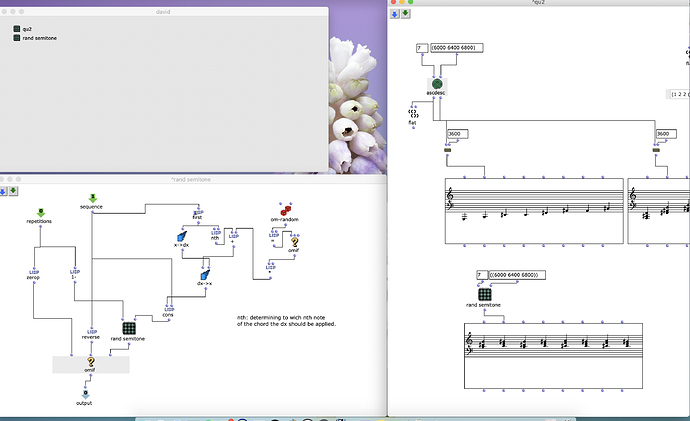Hello All,
I am currently working through the basic OM tutorials and have a very basic question about how to go about creating an iterative process with constraints. If there is a tutorial available, please point me in it’s direction.
If not, what I trying to do is:
impose a rule on the augmented triad CEG# (or its inversion CG#E). As CEG# ascends, the G# can resolve either up or down a half-step.
If it resolves down, the next sequence would be GBD# (ascending) or GD#B (descending)
If it resolves up, the next sequence would be AC#F (or its inversion AFC#) and so on.
Just a chain of Aug. triads connected by half-step motion.
An example of a sequence rising which transposes CEG# up a few octaves (CEG# AC#F F#BbD D#GB CEG# etc.)
I’m hoping that I will be able to use OM to determine the number and contour of the sequences of triads will required to get from the initial CEG# to, say, GBD#.
Thank you!

